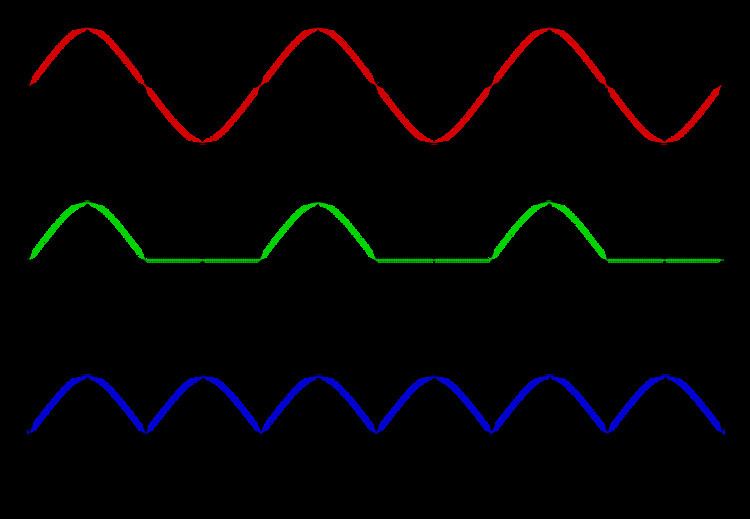 | ||
Pulsed DC or PDC is the form of wave produced from a half-wave rectifier or a full-wave rectifier. Full wave rectified ac is more commonly known as Rectified AC. PDC has some characteristics of both alternating current (AC) and direct current (DC) waveforms. The voltage of a DC wave is roughly constant, whereas the voltage of an AC waveform continually varies between positive and negative values. Like an AC wave, the voltage of a PDC wave continually varies, but like a DC wave, the sign of the voltage is constant.
Contents
Smoothing
Most modern electronic items function using a DC voltage, so the PDC waveform must usually be smoothed before use. A reservoir capacitor converts the PDC wave into a DC waveform with some superimposed ripple. When the PDC voltage is initially applied, it charges the capacitor, which acts as a short term storage device to keep the output at an acceptable level while the PDC waveform is at a low voltage. Voltage regulation is often also applied using either linear or switching regulation.
Uses
Pulsed DC may also be generated for purposes other than rectification. It is often used to reduce electric arcs when generating thin carbon films, and for increasing yield in semiconductor fabrication by reducing electrostatic build-up. It is also generated by the voltage regulators in some automobiles, e.g., the classic air-cooled Volkswagen Beetle.
